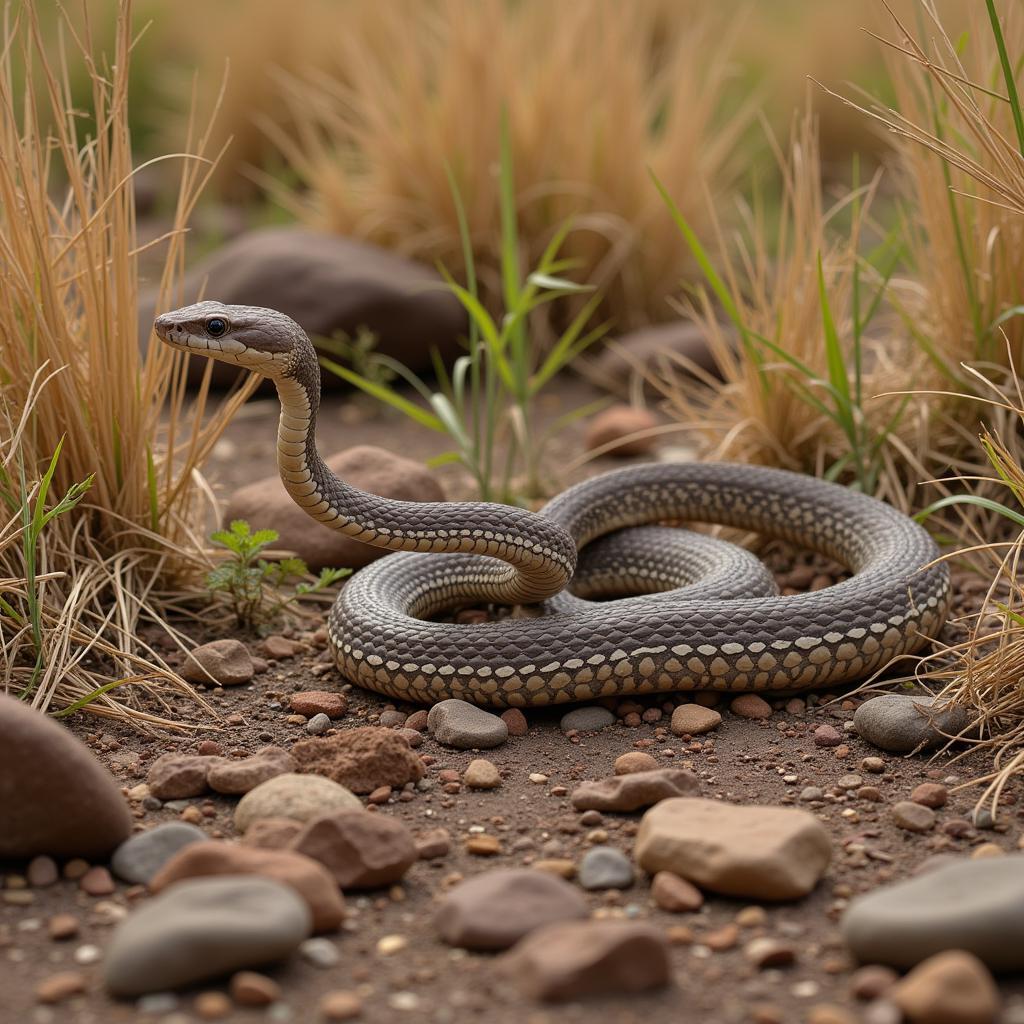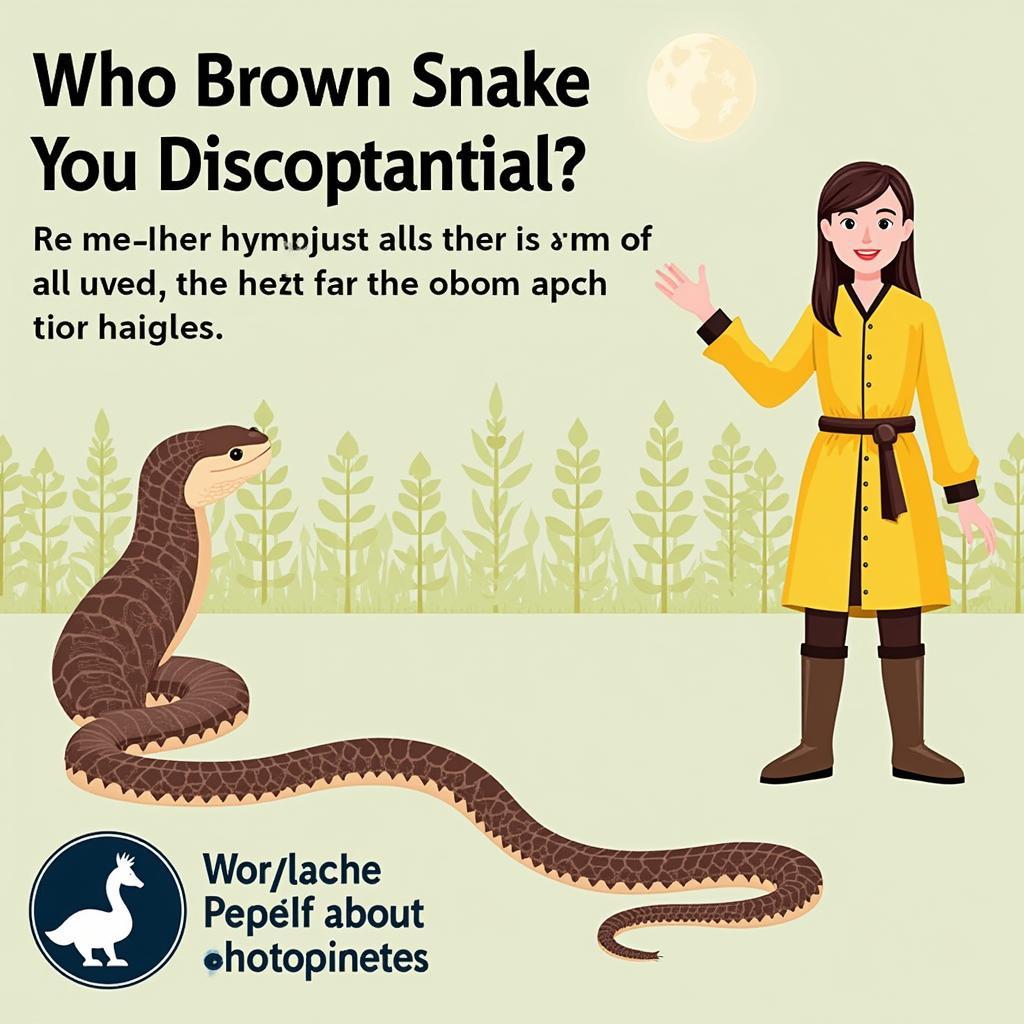Unveiling the Mysteries of the African Brown Snake
The African Brown Snake, a captivating reptile, evokes both fascination and fear. This article delves into the intriguing world of these elusive creatures, exploring their habitats, behaviors, and the crucial role they play in the African ecosystem. We’ll also address common misconceptions and provide valuable insights into coexisting peacefully with these remarkable serpents.
Understanding the African Brown Snake: Habitat and Distribution
African brown snakes are found in a variety of habitats across the African continent, from savannas and grasslands to woodlands and even some semi-desert regions. Their adaptability allows them to thrive in diverse environments, making them a common sight for those exploring the African wilderness. They are particularly prevalent in sub-Saharan Africa, where they play a significant role in the local ecosystems. Their presence helps to regulate rodent populations, contributing to the delicate balance of nature. After all, even a fearsome predator like the African brown snake has its place in the circle of life. Similar to the African rock python, they are ambush predators, relying on their camouflage and speed to capture prey.
 African Brown Snake Habitat: Savanna Grasslands
African Brown Snake Habitat: Savanna Grasslands
Identifying the African Brown Snake: Key Characteristics
While the name “African brown snake” suggests a uniform appearance, these snakes exhibit a range of colors and patterns. Typically, they display shades of brown, gray, or olive, often with darker markings. This coloration provides excellent camouflage, allowing them to blend seamlessly with their surroundings. Their slender bodies and relatively small heads are also distinguishing features. It is important to accurately identify these snakes, distinguishing them from similar species, some of which may be more venomous.
The Diet and Hunting Techniques of the African Brown Snake
The African brown snake is a carnivore, primarily feeding on small mammals, lizards, and amphibians. Their hunting techniques involve a combination of ambush and active pursuit. They are known for their speed and agility, allowing them to quickly subdue their prey. Interestingly, their diet plays a crucial role in maintaining ecological balance within their respective habitats. Sometimes, these predators can even consume other snakes, a behavior seen in various species across the continent. Like the African bullfrog eating snake, they can be opportunistic feeders.
African Brown Snake and Humans: Coexistence and Safety
While African brown snakes are not considered highly venomous to humans, their bites can still cause significant pain and discomfort. It is crucial to respect their space and avoid provoking them. Understanding their behavior and habitat preferences can help minimize encounters and promote peaceful coexistence. If you encounter an African brown snake, it is best to remain calm and move away slowly, allowing the snake to retreat without feeling threatened. Education is key to fostering a healthy relationship between humans and these fascinating reptiles. Would you be surprised to learn that interior design can be inspired by these snakes’ natural camouflage? Check out these African interior design ideas living rooms.
Myths and Misconceptions about the African Brown Snake
Many myths surround the African brown snake, often exaggerating their aggressiveness and danger. It’s essential to dispel these misconceptions and rely on scientifically-backed information. One common myth is that these snakes are inherently aggressive, when in reality they prefer to avoid confrontation. Another misconception is that all brown snakes in Africa are the same species, overlooking the rich diversity of snake species found across the continent. For example, the African King Kobra, while sharing a similar habitat, is a distinct species.
 Dispelling Myths About the African Brown Snake
Dispelling Myths About the African Brown Snake
In conclusion, the African brown snake is a vital component of the African ecosystem, playing a significant role in maintaining balance and biodiversity. By understanding their behaviors, habitats, and the importance of coexisting peacefully, we can appreciate these fascinating reptiles for their contributions to the natural world. Remember to always respect wildlife and prioritize safety when exploring the African wilderness. The African brown snake, although often misunderstood, is a creature deserving of our respect and admiration.
FAQ
-
What do African brown snakes eat?
They primarily eat small mammals, lizards, and amphibians. -
Are African brown snakes venomous?
While not highly venomous to humans, their bites can cause pain and discomfort. -
Where do African brown snakes live?
They inhabit various environments across sub-Saharan Africa, including savannas, grasslands, and woodlands. -
How can I avoid being bitten by an African brown snake?
Respect their space, avoid provoking them, and move away slowly if encountered. -
What should I do if I am bitten by an African brown snake?
Seek medical attention promptly. -
Are African brown snakes aggressive?
They are not inherently aggressive and generally prefer to avoid confrontation. -
What are some common misconceptions about African brown snakes?
Some myths exaggerate their aggressiveness and danger, and generalize all brown snakes in Africa as the same species.
Do you know about the African black footed squirrel? It shares similar habitats with the African brown snake.
For any inquiries or assistance regarding wildlife in Africa, please contact us:
Phone: +255768904061
Email: kaka.mag@gmail.com
Address: Mbarali DC Mawindi, Kangaga, Tanzania
Our customer service team is available 24/7.
